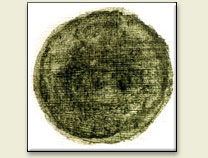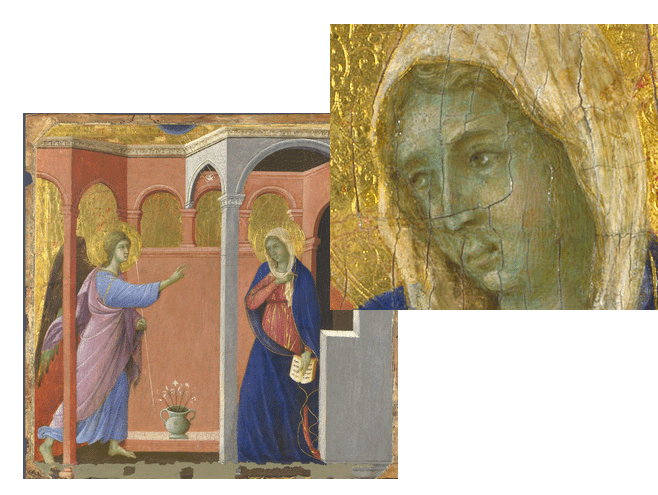
Brief description of Green earth:
Natural green pigment varying in compostion and in shades of color. It has low hiding power but is unaffected by light or chemicals. Green earth is a mixture of hydrosilicate of Fe, Mg, Al, K, (mainly minerals as celadonite and glauconite) but other minerals are likely to be present. Used since antiquity, medieval Italian painters used green earth for underpainting middle and shadow flesh tones.
Names for Green earth:
| Alternative names: | terre verte, Verona green, | ||||||
| Non-English names: |
|
||||||
| Origin: | natural earth | ||||||
| Chemical name: | complex aluminosilicate minerals |
Example of use by artists:
Looking green but not sick

Duccio, The Annunciation, 1311, National Gallery, London
Medieval painters used green earth pigments for flesh undertones. This underpainting of green neutralized the effect of the pinks and reds of the flesh colors. To paint the pinks of flesh directly onto the white gesso would acheive a "sunburn" effect in the flesh of the figures. To neutralize the pink, painters painted a layer of green earth under the pink. The red pigments' layer has often faded away leaving a greenish color.
(intro) - Cobalt green - Copper resinate - Emerald green - Green earth - Malachite - Verdigris - Viridian

